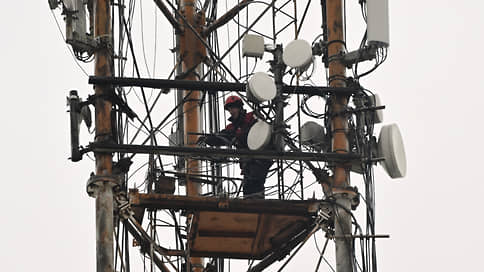In 2023, the number of communication base stations and their components imported into the Russian Federation increased by 56% in money terms – up to $205 million
[ad_1]

The communications infrastructure in the Russian Federation continues to be updated, despite sanctions and other restrictions. In 2023, it was possible to import 15% more base stations and their components into the country compared to year-on-year; in monetary terms, imports increased by one and a half times. Operators are talking about expanding the network of suppliers and purchasing “in retail mode”: only what is needed right now, without long-term contacts. Market participants clarify that the goal of 2024 will not be to expand the network, but to increase capacity, for which it is necessary to intensify the supply of components. But mitigation of supply problems, Kommersant sources say, threatens import substitution, since “the passion to buy Russian goods has disappeared.”
In 2023, the number of communication base stations and their components imported into the Russian Federation (transceivers, remote radio units and radio modules) increased by 56% in money, to $205 million, and by 15% in pieces, to 85.7 thousand, follows from customs data statistics that Kommersant got acquainted with. The equipment mainly supplied is from traditional world leaders in this field – Huawei, Ericsson and Nokia.
The FCS declined to comment. Huawei and the Ministry of Digital Development did not answer Kommersant. Ericsson emphasized that it stopped supplying equipment to the Russian Federation in March 2022. “We have completed our withdrawal from Russia and are not supplying it with anything,” Nokia told Kommersant.
A Kommersant source close to telecom operators explains the significant increase in imports in terms of money by the fact that they switched to purchasing in a “retail format”: “Previously, there were long contracts and large volumes. Now even used hardware costs significantly more than new ones before.” A Kommersant source in the telecommunications equipment market adds that “the price has also increased due to additional costs – commissions and transportation costs have increased, there is no talk of discounts.”
VimpelCom, MTS and Tele2 declined to comment. The press service of MegaFon tells Kommersant that the company does not experience any difficulties with equipment and has “sufficient reserves, including base stations, to provide communication services at a high level.” “We are constantly working to expand the network of Russian and foreign suppliers,” the company emphasized.
After the outbreak of hostilities in Ukraine, the world’s main manufacturers of telecommunications equipment, including Huawei, Nokia and Ericsson, stopped supplies to the Russian Federation.
“In the first quarter of 2022, we managed to purchase as much as possible. Then came the shock when supplies were effectively frozen. Since 2023, intermediaries have found working supply chains, deliveries have resumed, although in a much smaller volume,” explains a Kommersant source close to one of the operators. According to him, old stocks and imported supplies “are enough for urgent needs.” However, shipments are “still below half of 2021 levels.” A Kommersant source among equipment suppliers clarifies that imports continue through parallel imports.
“No one is buying in reserve now. They buy exactly as much as is needed to cover the need for traffic growth and coverage,” clarifies Kommersant’s interlocutor at the market. A Kommersant source among suppliers agrees with him: “Components are easier to import than entire base stations. By installing additional radio units, you can simply increase the power of the base station without the need to install a new one. For new ones, at a minimum, sites for masts are needed; such mass construction is not happening.”
Taking into account the existing base stations and the current coverage of the territory, all operators’ plans for the construction of sites for placing new equipment per year do not exceed 4–10% of the network volume, explains a Kommersant source among suppliers. “The main task now is to expand the capacity of sites, increase the number of sectors, this is being solved by parallel imports,” explains Kommersant’s interlocutor. “Many companies, including the operators themselves, have learned to supply components. Therefore, two years after the imposition of sanctions, mobile communications users do not experience any serious problems with its quality, and the cost of services remains one of the lowest in the world.”
At the same time, says Kommersant’s interlocutor close to the operators, domestic equipment manufacturers seriously fear that “effective parallel imports, which may be even more active than customs data reflect,” will affect import substitution: “The initial fuse of enterprises and operators to purchase Russian analogues have essentially disappeared.”
[ad_2]
Source link





